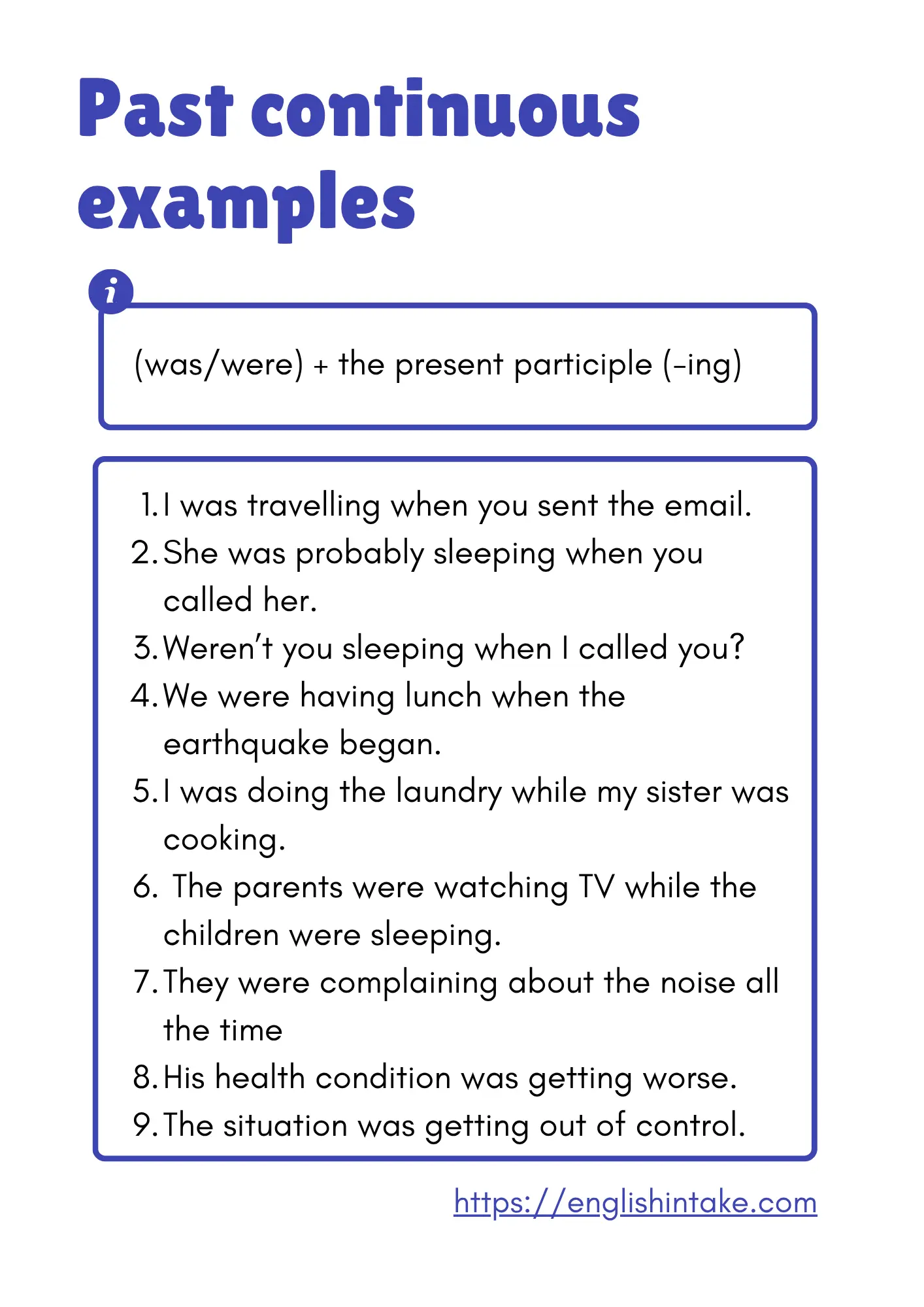1. Past continuous tense examples
The past continuous tense (or past progressive) expresses an action that was in progress at a specific time in the past. It is formed by using the past form of the verb to be (was/were) + the present participle (-ing) form of the main verb. Let's look at several examples where this tense can be used.
1.1 Interrupted action in the past
The following examples express an action that was in progress when another action happened.
- I was studying for my exam when my friend called me.
- She was cooking dinner when the fire alarm went off.
- They were playing soccer when it started to rain.
- She was taking a nap when her phone rang.
- I was writing an email when the power went out.
- They were having a party when the police came.
1.2 Parallel action
- I was watching TV while my sister was doing her homework.
- He was running in the park while I was walking my dog.
- They were reading their books while we were listening to music.
- She was watering the flowers while I was mowing the lawn.
- I was reading a book while she was knitting a scarf.
- They were hiking in the mountains while I was swimming in the lake.
1.3 Repeated action
The past continuous tense can be used to describe actions that were repeatedly happening in the past. The actions are often expressed with adverbs (or time expressions) such as always, constantly, continually, and all the time. These time expressions are used to emphasise the repetitive and habitual nature of the actions and can be used to convey a sense of annoyance or frustration with the actions.
- I was constantly making the same mistake.
- She was complaining about her job all the time.
- They were always forgetting to turn off the light.
- He was continually procrastinating.
- We were arguing about the same thing all the time.
- He was always forgetting my birthday.
1.4 Expressing change and gradual development
The past continuous tense can be used to describe actions that were gradually progressing and evolving. Adverbs such as slowly, gradually, steadily, consistently, and progressively are often used to describe these actions.
- I was getting more familiar with the company's procedures.
- The whole situation was getting worse.
- We were slowly building a stronger relationship.
- We were steadily increasing our sales.
- They were slowly becoming more environmentally conscious.
- She was becoming more fluent in English.

2. Things to remember
It is important to note that the past continuous tense is often used together with the simple past tense to indicate that one action was in progress when another action occurred.
Are you still confused? This past continuous worksheet will reinforce your understanding.
